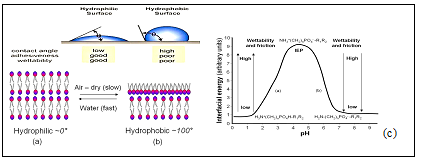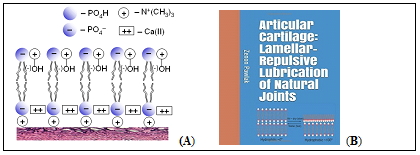Clinical Case Reports and Clinical Study
OPEN ACCESS | Volume 13 - Issue 1 - 2026
ISSN No: 2766-8614 | Journal DOI: 10.61148/2766-8614/JCCRCS
Zenon Pawlak 1*, Karpinska Bozena 2, Rekowski Michał 3
1 Tribochemistry Consulting, Salt Lake City, UT 84117, USA and University of Economy, Biotribology Laboratory, Garbary 2, 85-229 Bydgoszcz, Poland
2 University of Economy, Biotribology Laboratory, Garbary 2, 85-229 Bydgoszcz, Poland
3 University of Bydgoszcz, Unii Lubelskiej 4c, 85-059 Bydgoszcz, Poland
*Corresponding author: Zenon Pawlak, Tribochemistry Consulting, Salt Lake City, UT 84117, USA and University of Economy, Biotribology Laboratory, Garbary 2, 85-229 Bydgoszcz, Poland.
Received: January 10, 2021
Accepted: February 10, 2021
Published: March 02, 2021
Citation: Pawlak Z, Bozena K, Michał R. “Articular cartilage: Can Articular Cartilage be considered a Smart Material?”. Clinical Case Reports and Clinical Study, 2(2); DOI: 10.61148/2766-8614/JCCRCS/022
Copyright: © 2021 Zenon Pawlak. This is an open access article distributed under the Creative Commons Attribution License, which permits unrestricted use, distribution, and reproduction in any medium, provided the original work is properly cited.
It has been shown that the “smart surface” of cartilage is highly hydrophilic when wet and hydrophobic when air-dry. The minimum surface energy of the bilayer was found to spread over a wide range of pH (6.5 to 9.5). The decreased number of bilayers changed the wettability and lowered the PL lubricant properties. In conclusion, a cartilage smart material can significantly react to changes pH and moisture.
The biological tissue of the articular cartilage (AC) is amphoteric in its natural condition transforming surface from the hydrophilic to hydrophobic in air-dry condition (Fig.1 a, b). The profiles of the interfacial surface energy (Y) of spherical lipid bilayer model „bell-shaped curve” vs. pH change the surface charge from positive, neutral to negative, the articular cartilage can be named a “smart material” (Fig. 1c). The understanding of AC amphoteric surface will be essential for understanding the joints lubrication mechanism, the effective repair and regeneration of the degraded knee joint.

Figure 1: (a, b) The smart-surface constitution of superficial phospholipid bilayer of articular cartilage in (a) wet (hydrophilic) and (b) at air-dry condition (hydrophobic). Fig. 1 (c) The profiles of the interfacial surface energy ( ) of spherical lipid bilayer model „bell-shaped curve” vs. pH of buffer solution.
) of spherical lipid bilayer model „bell-shaped curve” vs. pH of buffer solution.
(a) ( pH 0.2 to 4.0 (-NH3+→ -NH2.). (b) (pH 4.0 to 6.5 ) (-PO4H → -PO4-)
IEP : H2N (CH2)n PO4H-R1R2 D H3N+(CH2)n PO4--R1R2
The isoelectric point, IEP, is at a pH of ~ 4 when a PL molecule carries no net electrical charge H2N (CH2)n PO4H-R1R2 D H3N+ (CH2)n PO4--R1R2. Changes of the interfacial energy correspond to the amino (-NH3+→ -NH2) transition with a low pH, after IEP the phosphate (-PO4H → -PO4-) transition at a higher pH range of 4 to 6.5. The isoelectric point, IEP, with the pH at which a phospholipid molecule carries no net electrical charge.
The wetted surfaces (pH~6.5 to 9.5) of the phospholipid membranes are negatively charged (–PO4-). Biosurface wettability can be measured relative to the differences in the charge density of the functional phosphate (–PO4-) group. In this regard, the wettability of a hydrated surface is characterized by the concentration of charged anionic phosphate (–PO4-) groups that are deactivated when the surface is dehydrated. The dehydration of the phospholipid bilayer surface activates hydrophobic groups, R (CH2)n – due to the formation of a hydrophobic monolayer, Fig.1. The hydrophilic surface in the course of dehydration, for example, via air-drying, undergoes a slow increase in the wettability contact angle indicating conformational changes in the surface (flip-flop) phospholipid molecules. Poor lubrication in animal joints, particularly on the articular surface of cartilage, can be attributed to deterioration of the bilayer surface, where the wettability or contact angle (θ) changes from 104° to less than 70° (Wettability was measured in air-dry condition)

Figure 2: (A) The hydrophilic model of cartilage surface (B) shows the cartilage transformation of the hydrophilic bilayer at wet condition to hydrophobic monolayer (at air-dry room condition).
The lamellar-repulsive mechanism is supported by phospholipid lamellar phases and charged macromolecules from synovial fluid between negatively charged cartilage surfaces. The low friction results as a consequence of a short-range hydration repulsion (nanometer-scale) between the interface of negatively charged (-PO4-) cartilage surfaces and contribution of macromolecules in the synovial fluid and most importantly a lamellar slippage of bilayers. The acid-base properties of the phospholipid bilayer significantly influence their wettability and surface friction properties Fig.2.
In conclusion, a cartilage smart material can significantly react to changes pH and moisture.